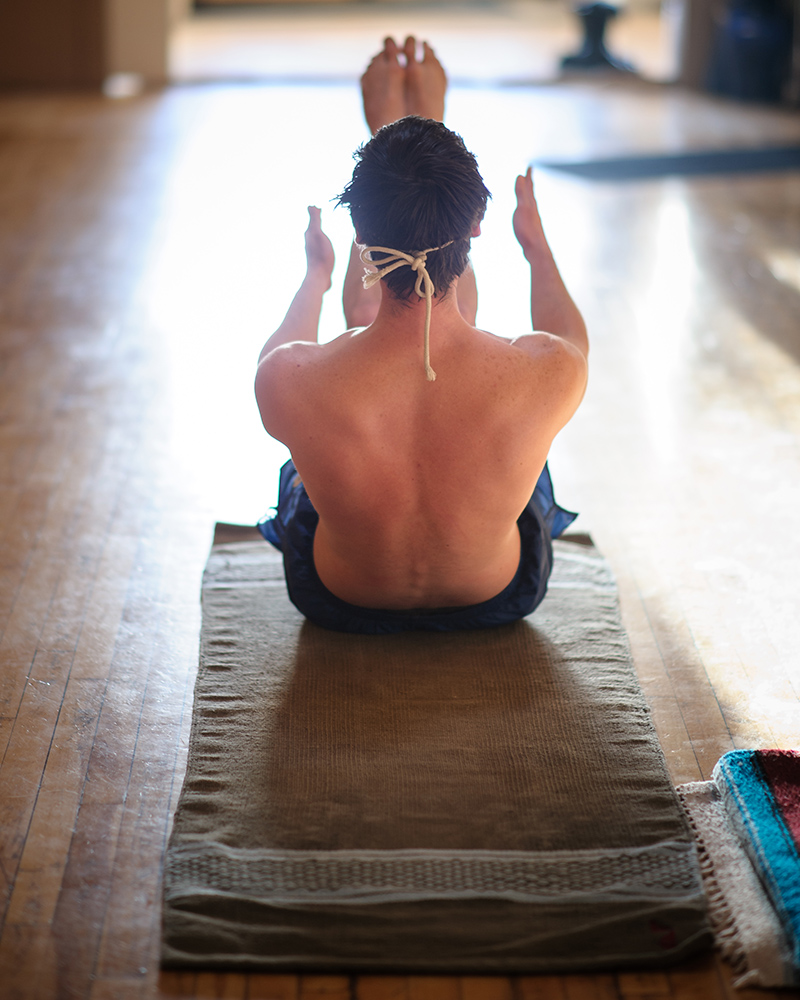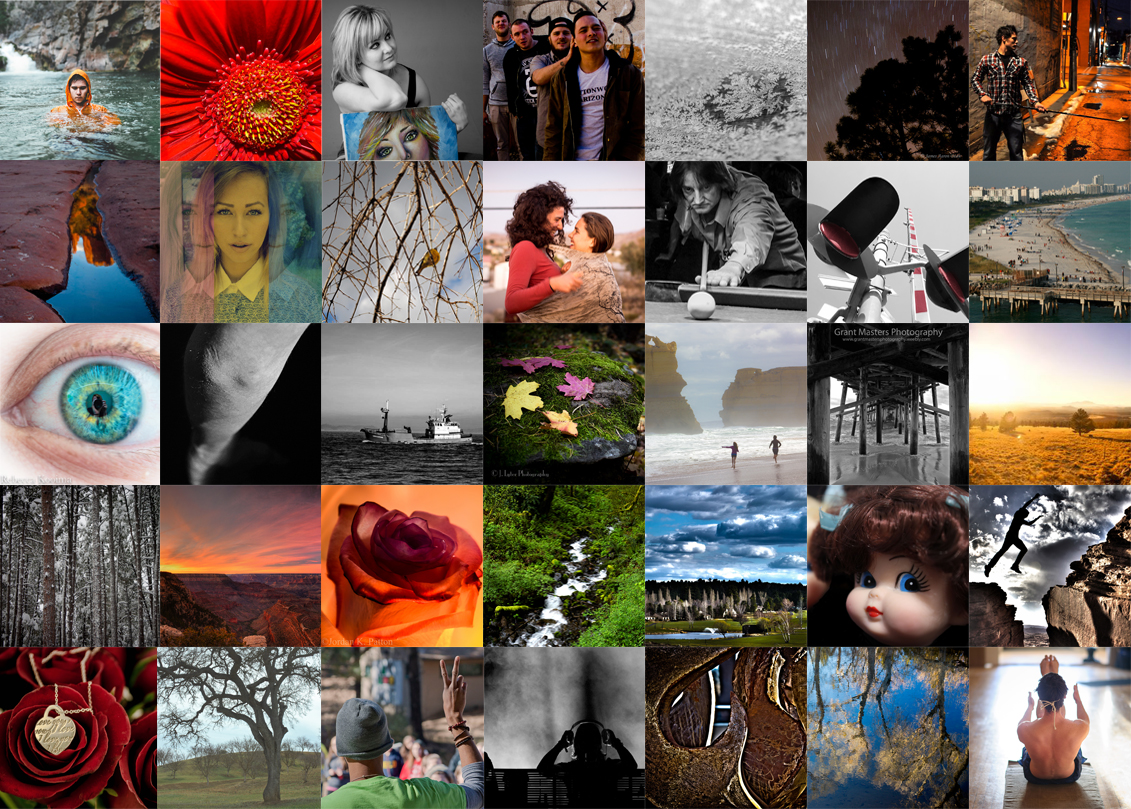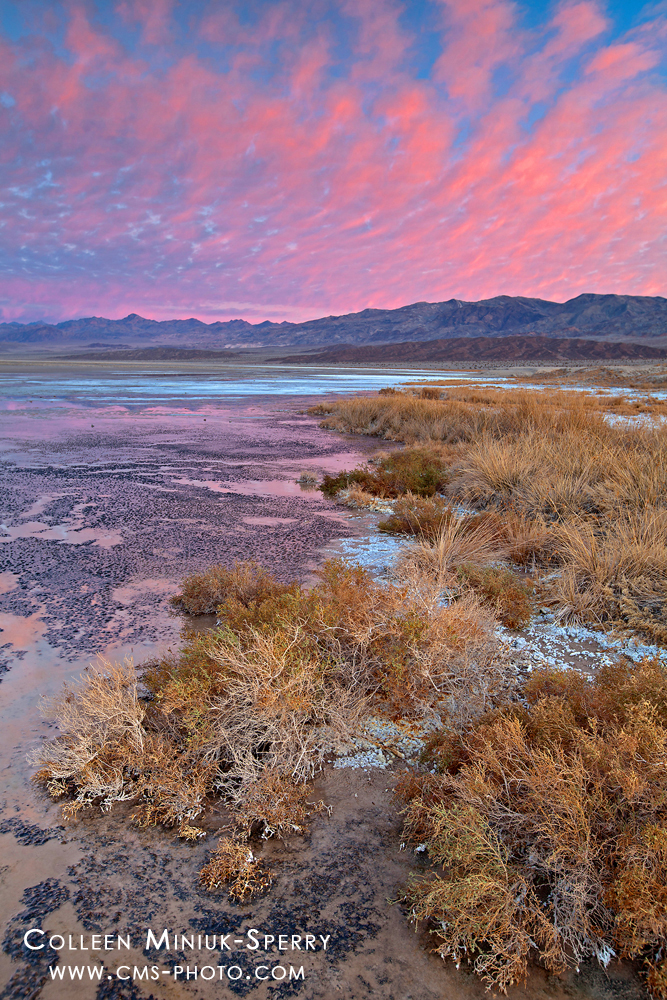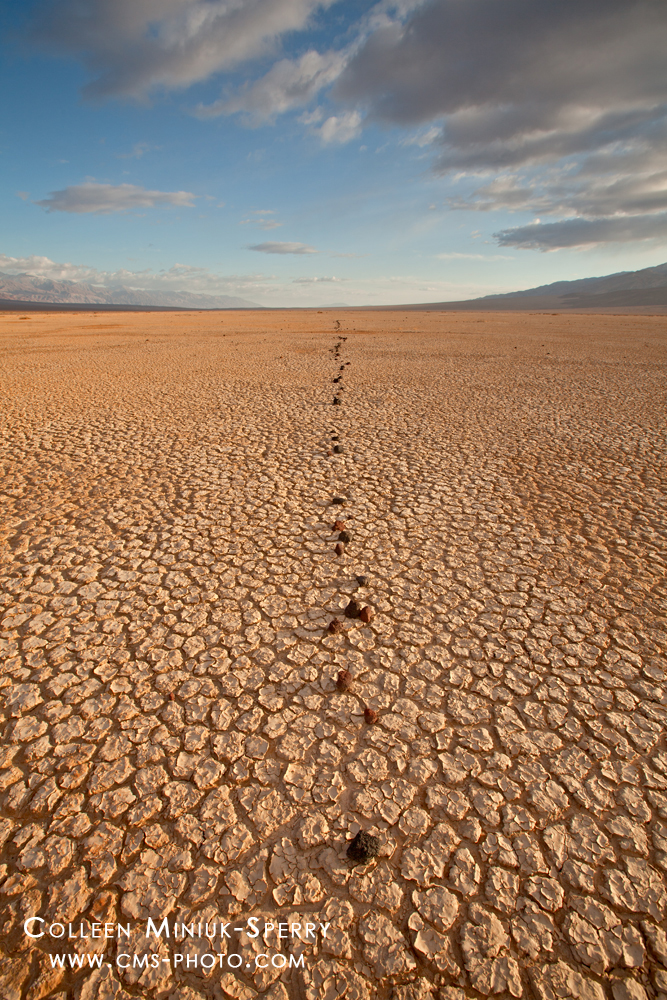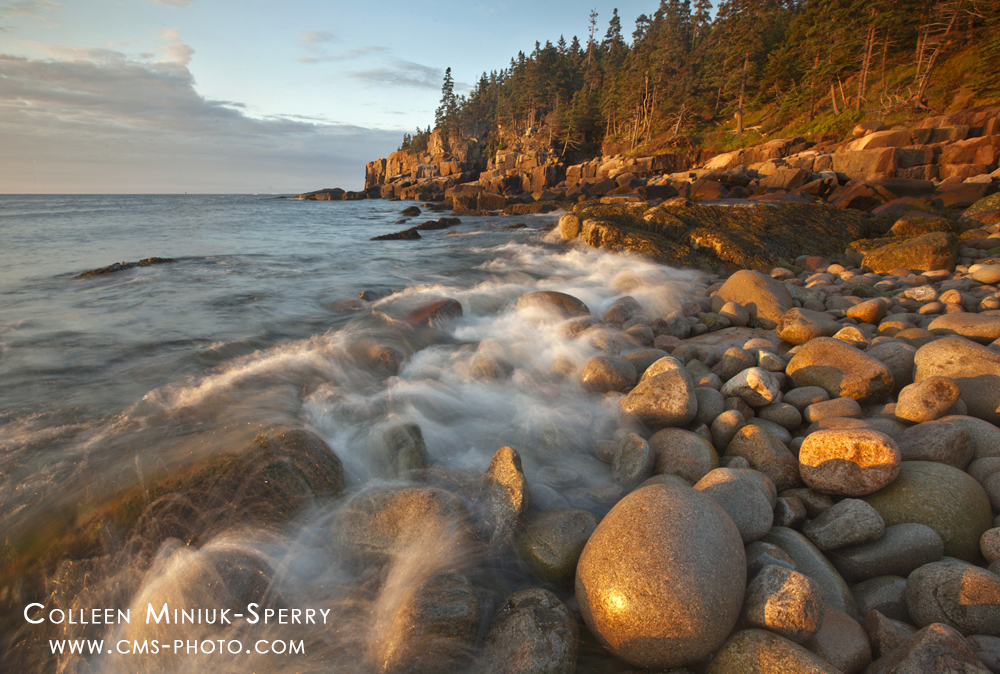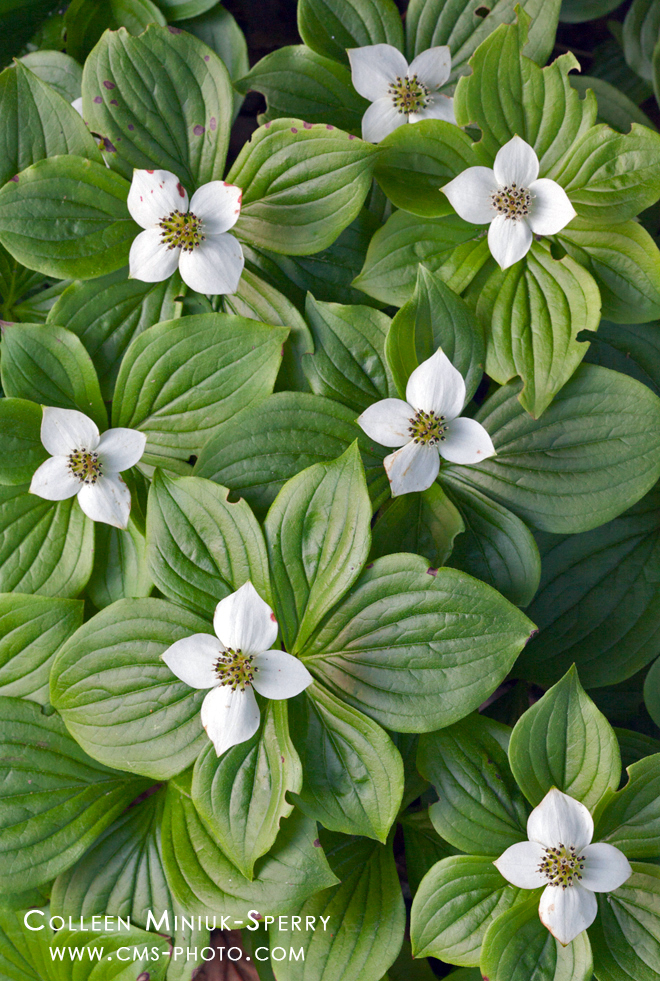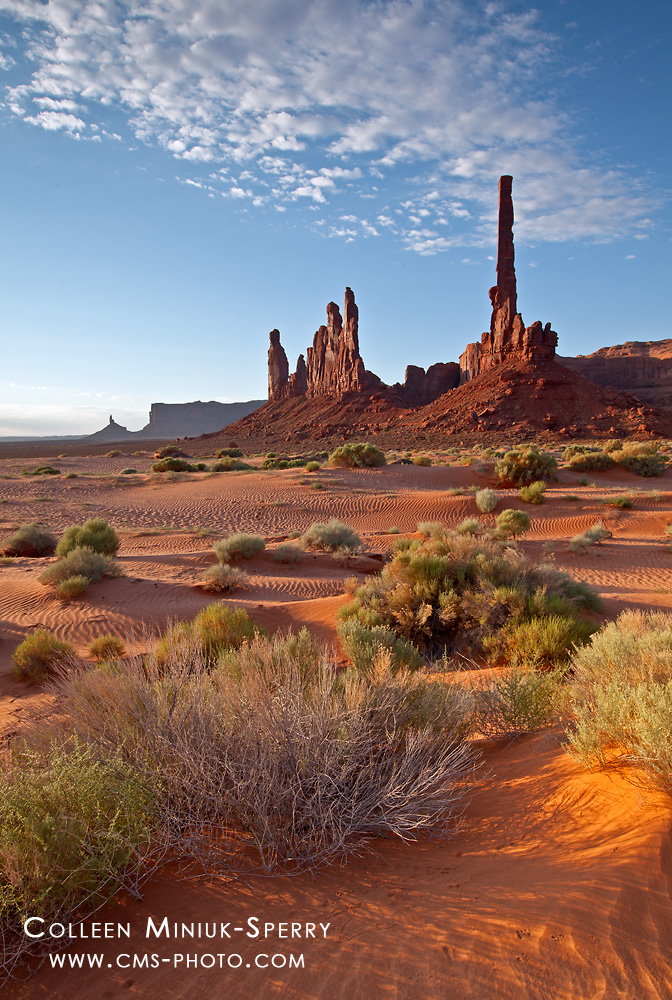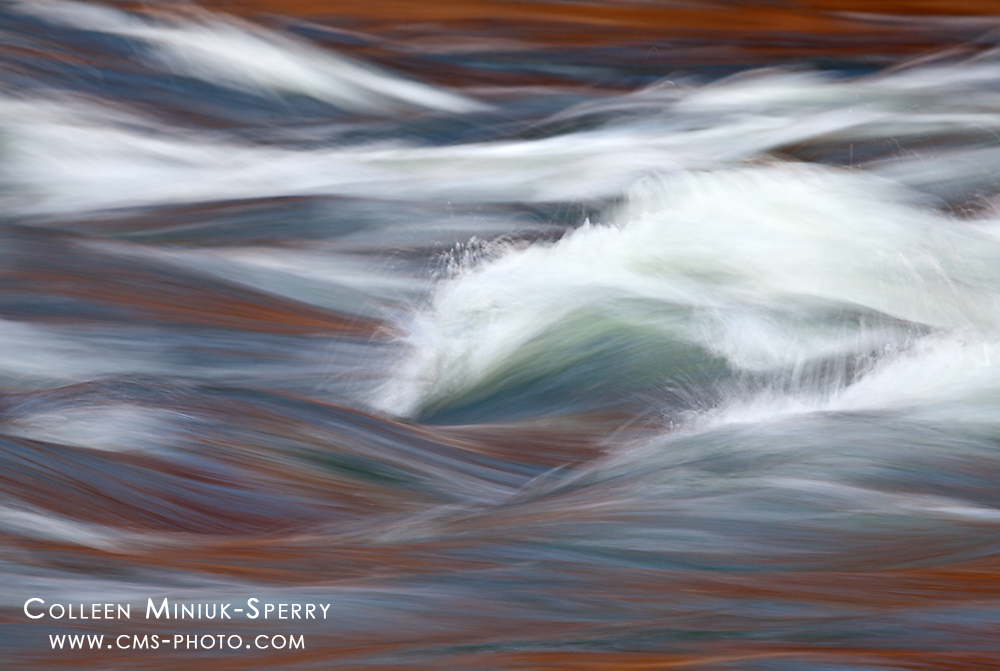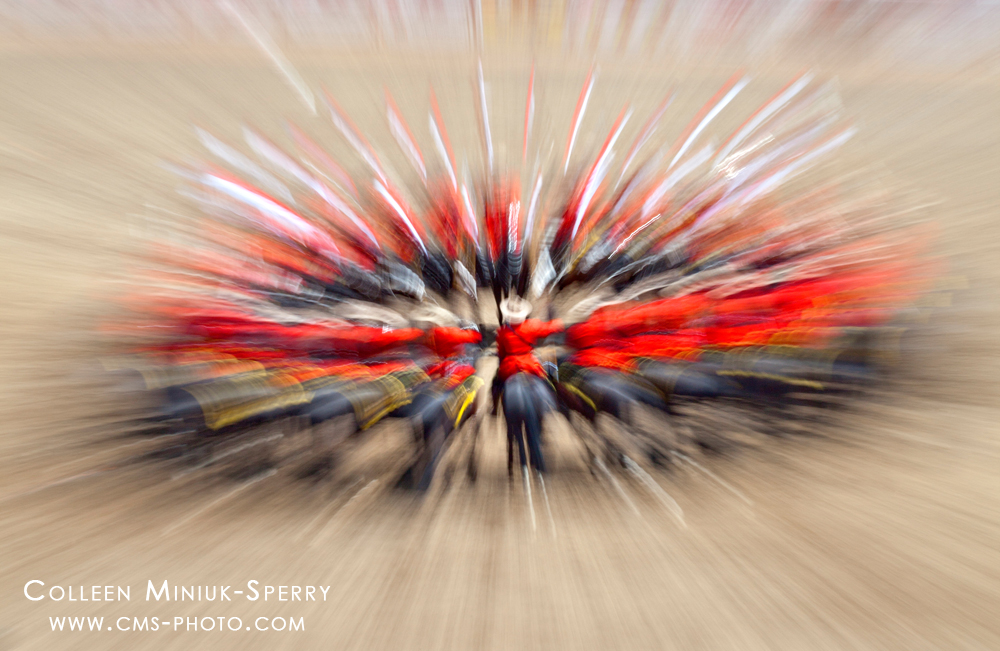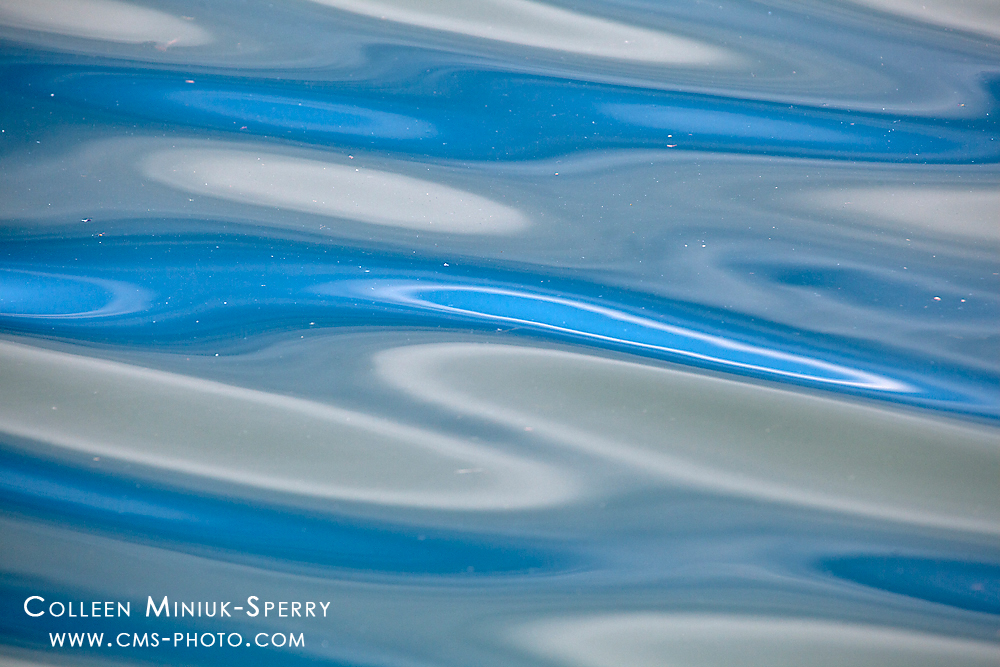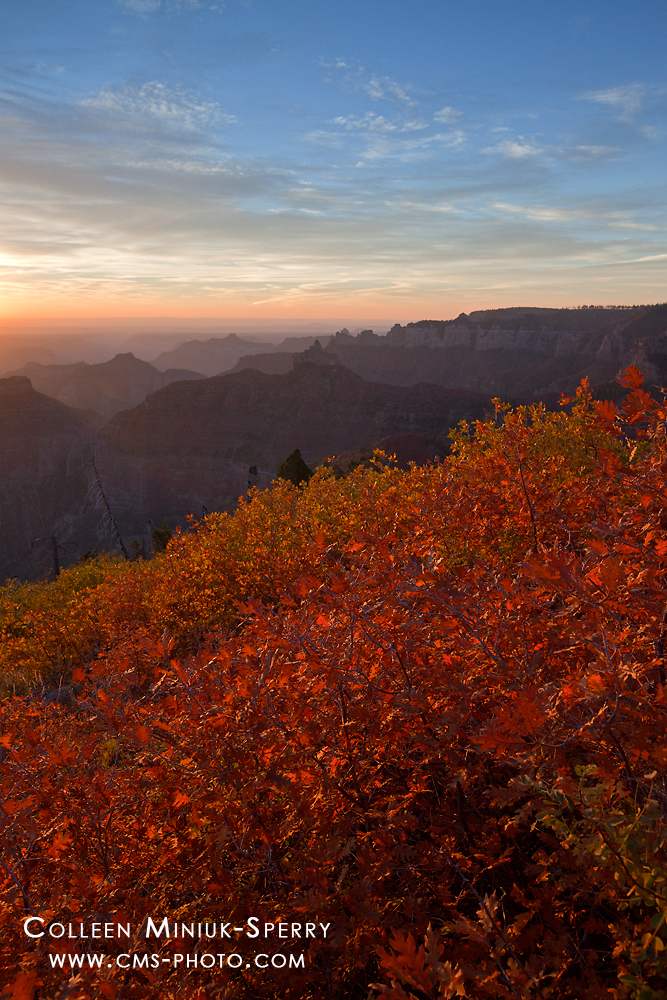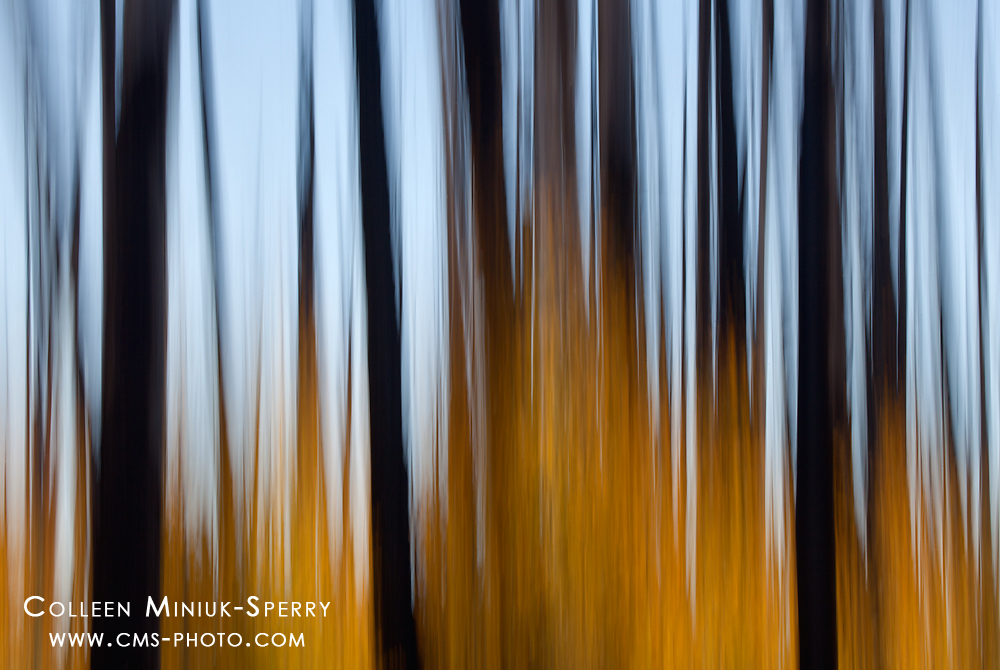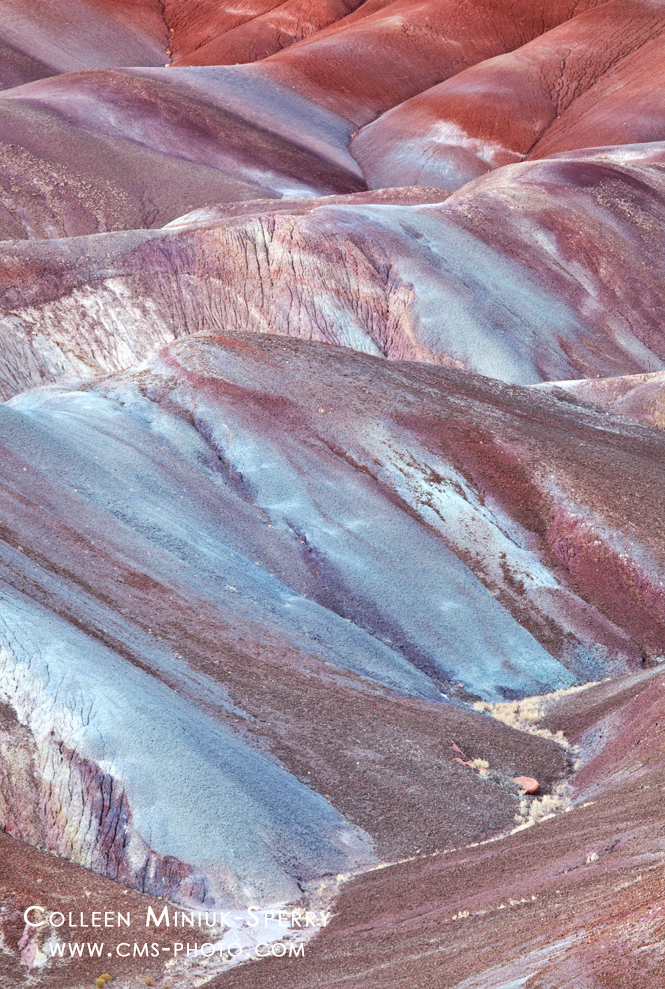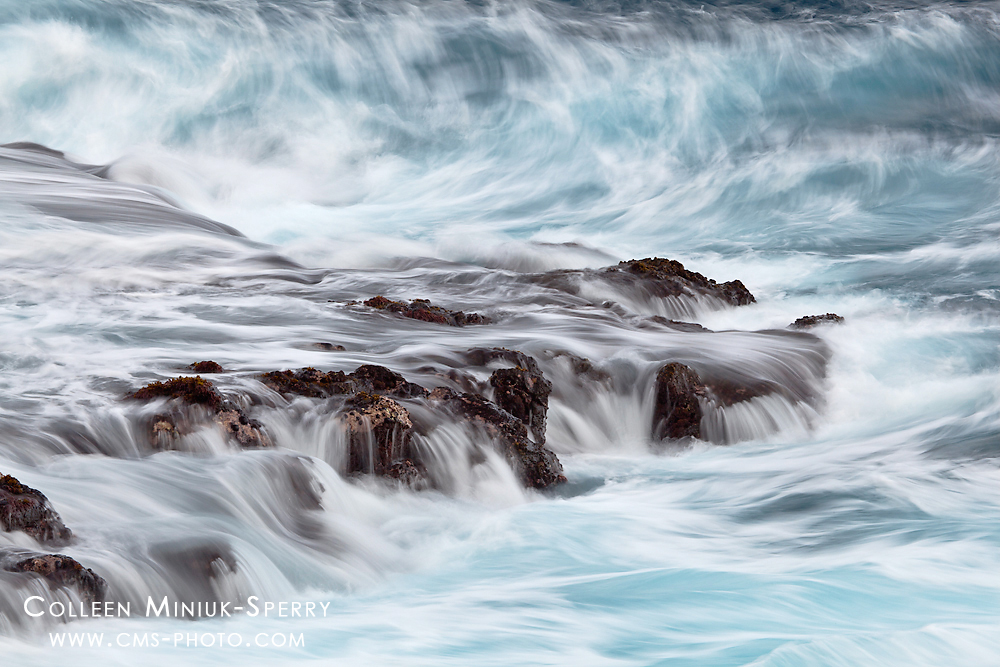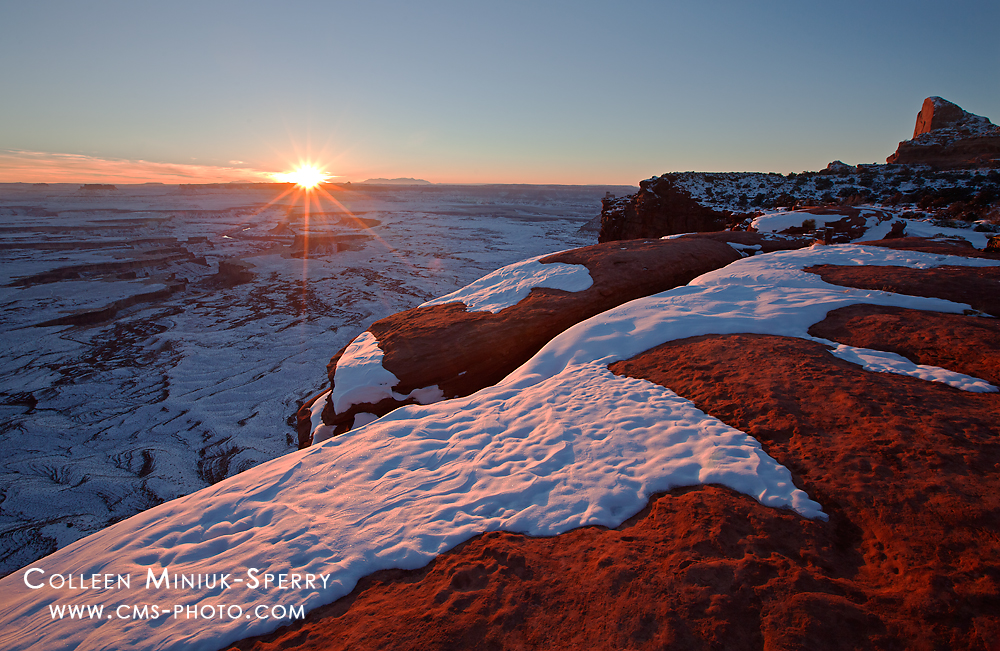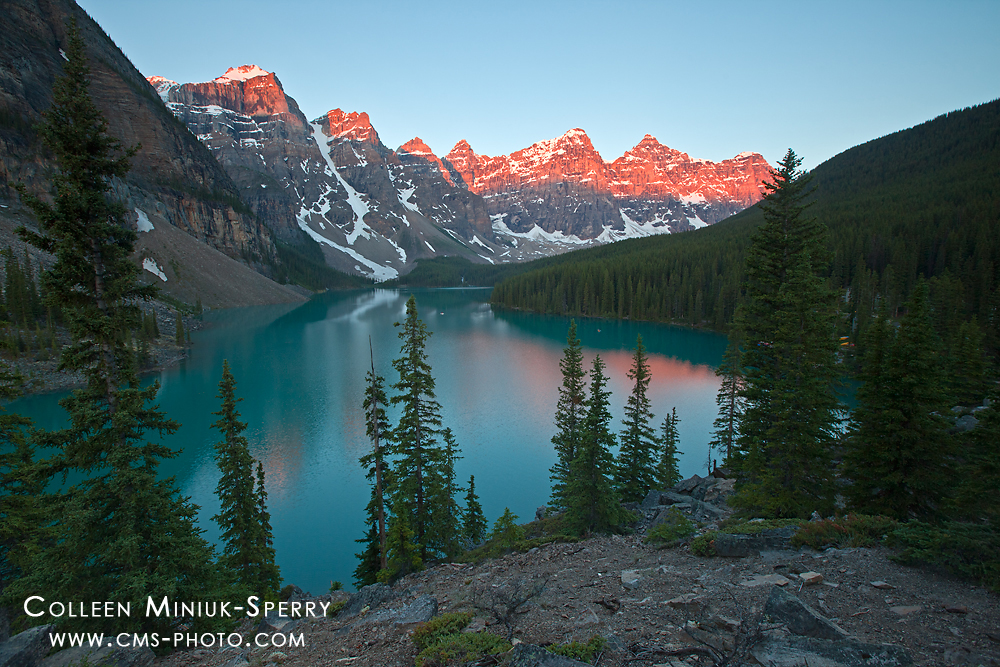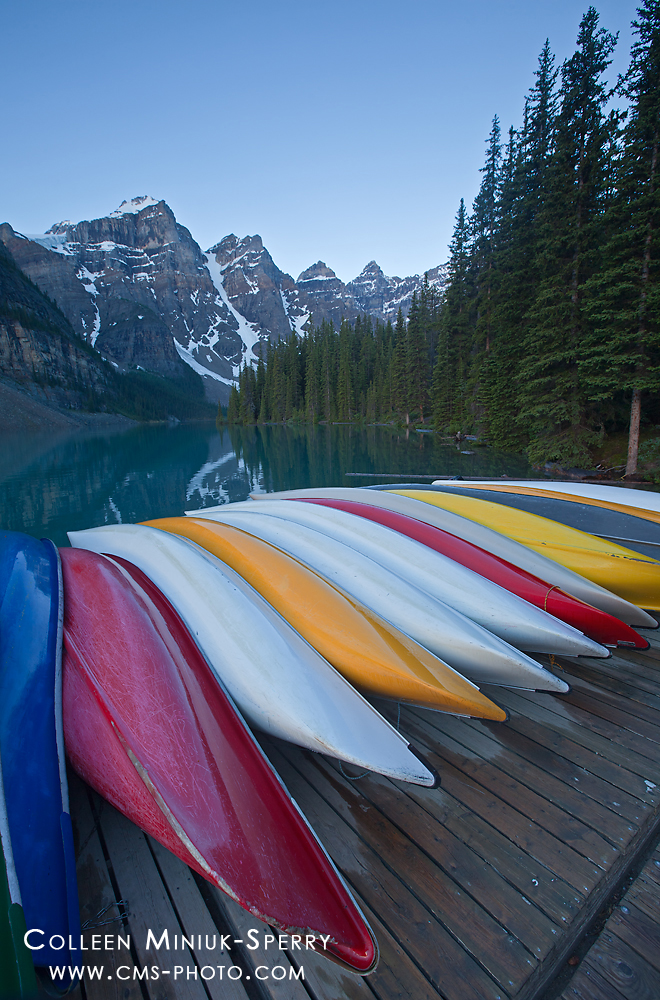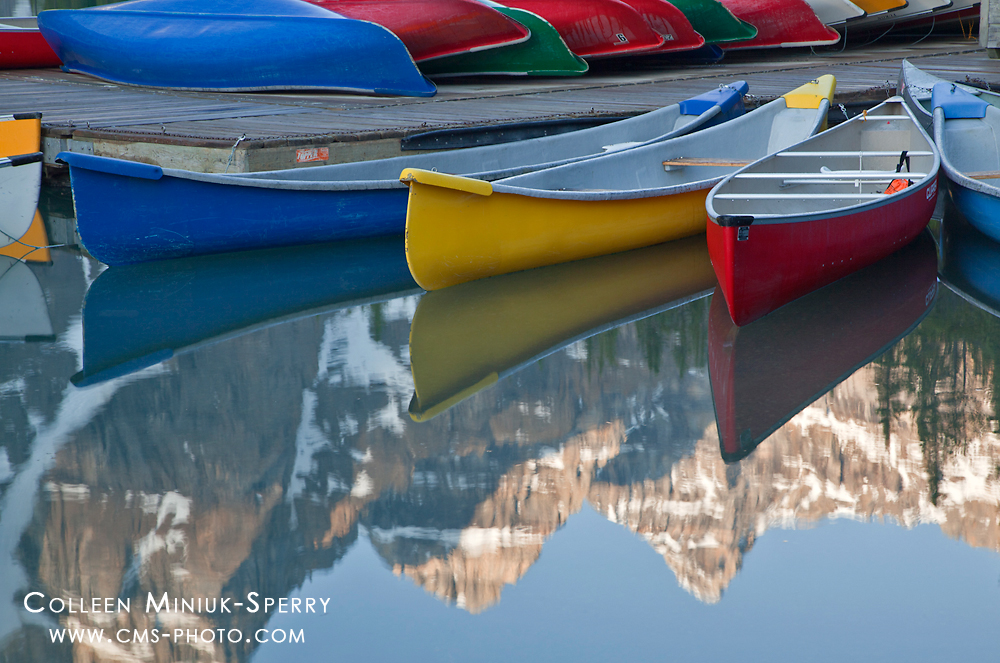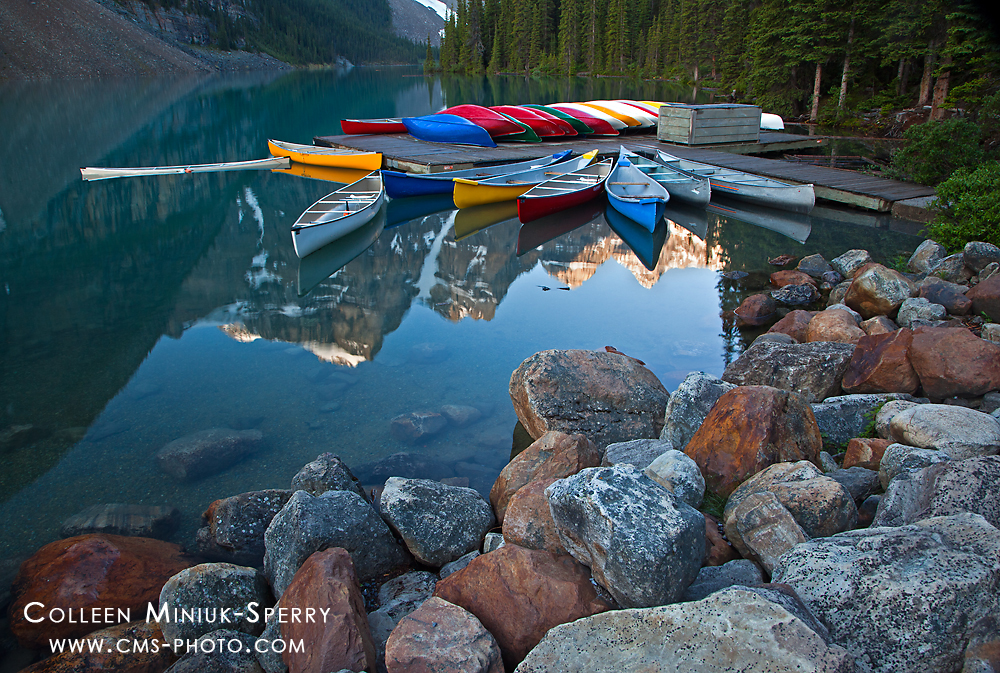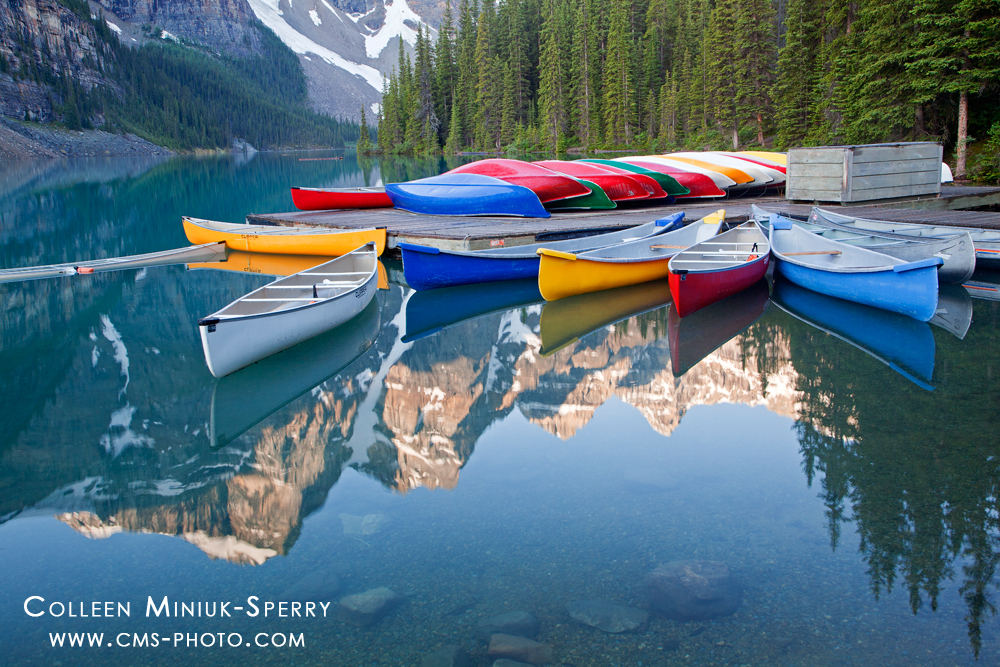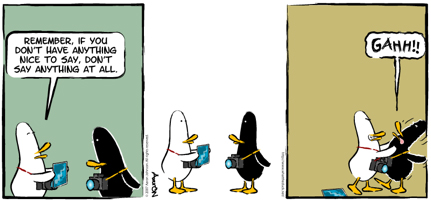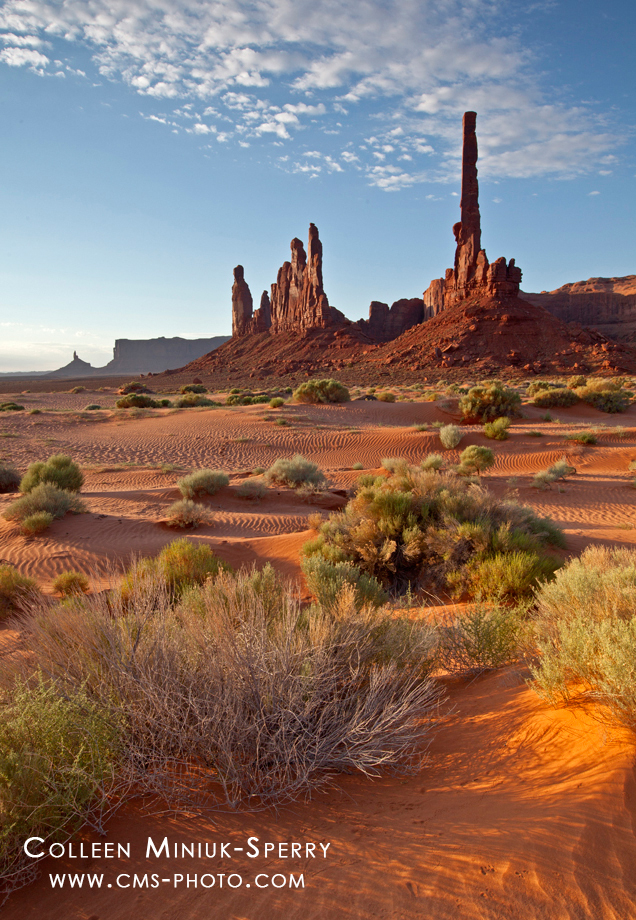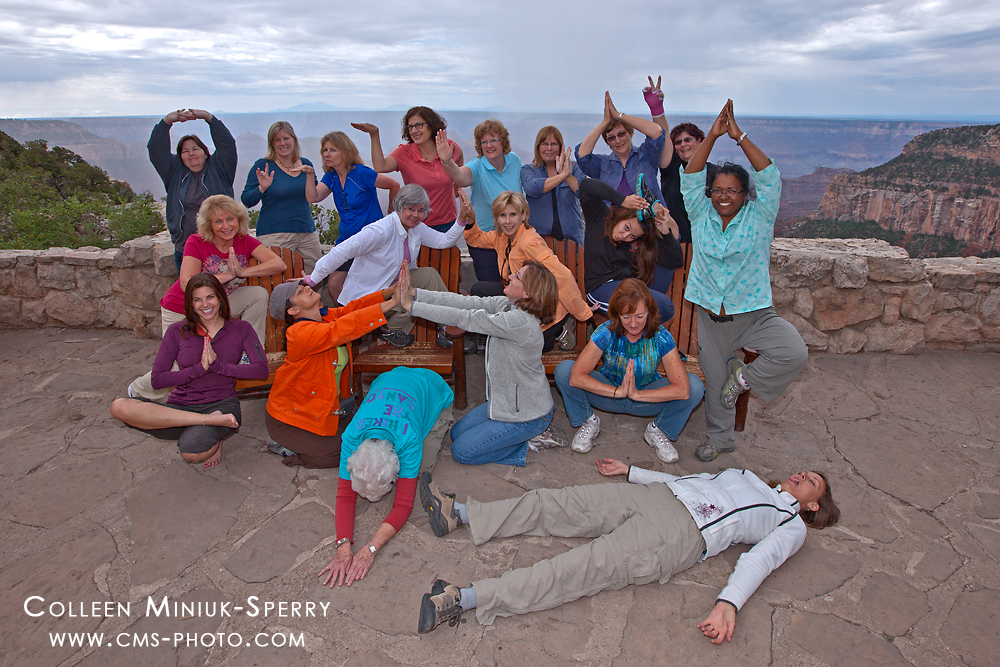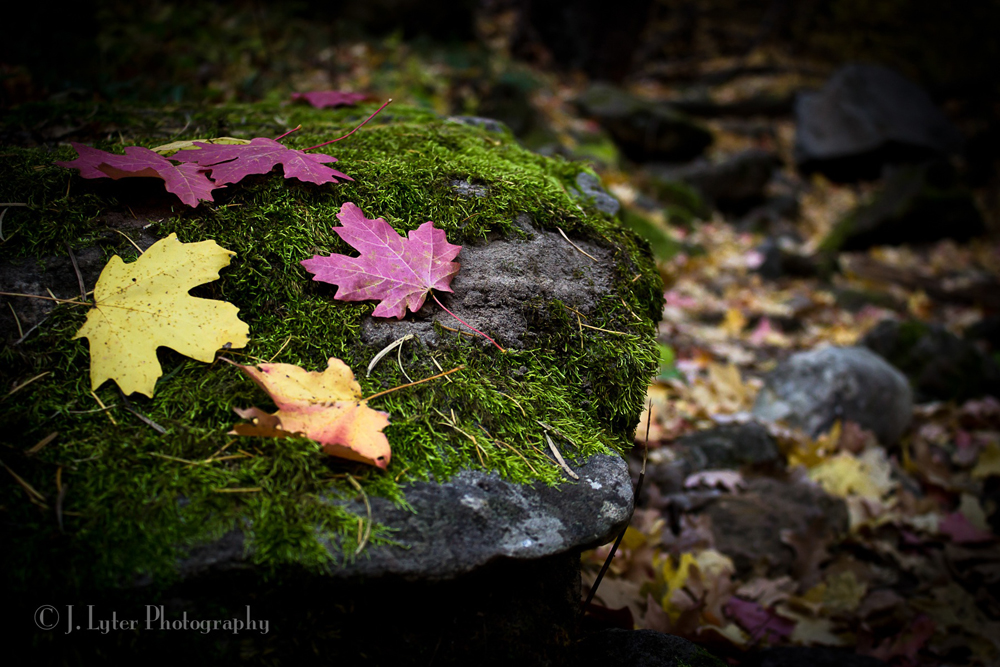
“Scattered in Place” – photograph copyright Jenna Lyter
“Scattered in Place” by Jenna Lyter
Normally when I take a photo of an object, I like to move things around until I feel they are in the right place. To me, the best part of this picture is that each leaf on the mossy rock is a different color, giving it a nice variety. The even better part is the fact that I didn’t put them there—it was all thanks to good old Mother Nature.
I hiked down in West Fork a few months ago, and brought my camera along for a landscape assignment I was given in class. Since landscapes are my least favorite to photograph, I wasn’t’ exactly jumping for joy. Although I pride myself on being organized and focused, once I get that DSLR in my hand, all of that so-called focus goes right out the window. I took one landscape picture and dozens of close-ups of other subjects I found to be much more intriguing: streams, rocks, tree trunks, flower, basically anything besides landscapes. This is nothing new for me, and I usually find that my best images are the unexpected ones. For this particular photo, I used a Canon Rebel t3i set at ISO 400, 18-55mm lens at 34mm, F/4.5, 1/50 second. When I came across this particular rock, I snapped a single photo and moved on; out of sight out of mind.
It wasn’t until I got into Lightroom that I realized how special this picture actually was. I boosted the vibrancy and contrast a bit, threw a vignette on, and there it was: the best picture I took on the entire hike. Vignettes hold a special place in my creative heart, and I tend to put them on most of my images—this one seemed to benefit from the heavier vignette in my eyes. Now this is highly unusual for me, as my favorite part of photography is often altering images until they look different than reality using wide-angle lenses, extreme close ups, and color selections. Sometimes though, all that fuss isn’t needed; sometimes less really is more. This image evokes a sort of calm and serenity in mind, especially when I think back to how peaceful the scene actually was: the early morning sunlight slowly streaming through the trees, hardly any hikers on the trail yet, and nothing but the sound of water trickling over rocks in the nearby stream. As photographers, we may think we know where props should be placed and light should be directed, but sometimes—as this image shows—nature knows best.
About the Photographer:
Although video is what I primarily use my beloved DSLR for, photography is becoming a close second. Cameras are a part of my everyday life between my film production major and my work as a videographer, but it wasn’t until last year that I declared a minor—and a passion—for photography. Being able to tell a story or communicate an emotion through a single image or video fascinates me, and I love being able to alter reality with a specific color selection, crop, or camera angle. Last year I began taking senior pictures for graduating seniors, and turned it into a side project called J. Lyter Photography & Video, which has allowed me to expand my audience through social media. In the future, I hope to be working professionally with both video and photography, and as long as I have a camera in my hand, I know I’ll be happy.
To read more about the Northern Arizona University “Behind the Image: Guest Blogger” project on our blog, please read the introduction on our April 15 post at youcansleepwhenyouredead.com/wordpress/introducing-the-nau-photography-students-behind-the-image-guest-blogger-project.

